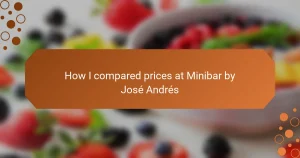Key takeaways
- Restaurant pricing strategies often utilize techniques like anchor pricing and consider factors such as quality, location, and ambiance to influence customer perception.
- Oyster Oyster stands out with its focus on sustainability and creativity in menu offerings, combining oysters with plant-forward dishes, which justifies its higher price point for many diners.
- Comparatively, while some local competitors offer lower prices, they may lack the same level of quality and dining experience, making Oyster Oyster’s premium pricing seem worthwhile.
- Value for money at Oyster Oyster is perceived through the uniqueness of the dining experience and the thoughtful sourcing of ingredients, appealing to diners who appreciate quality over quantity.
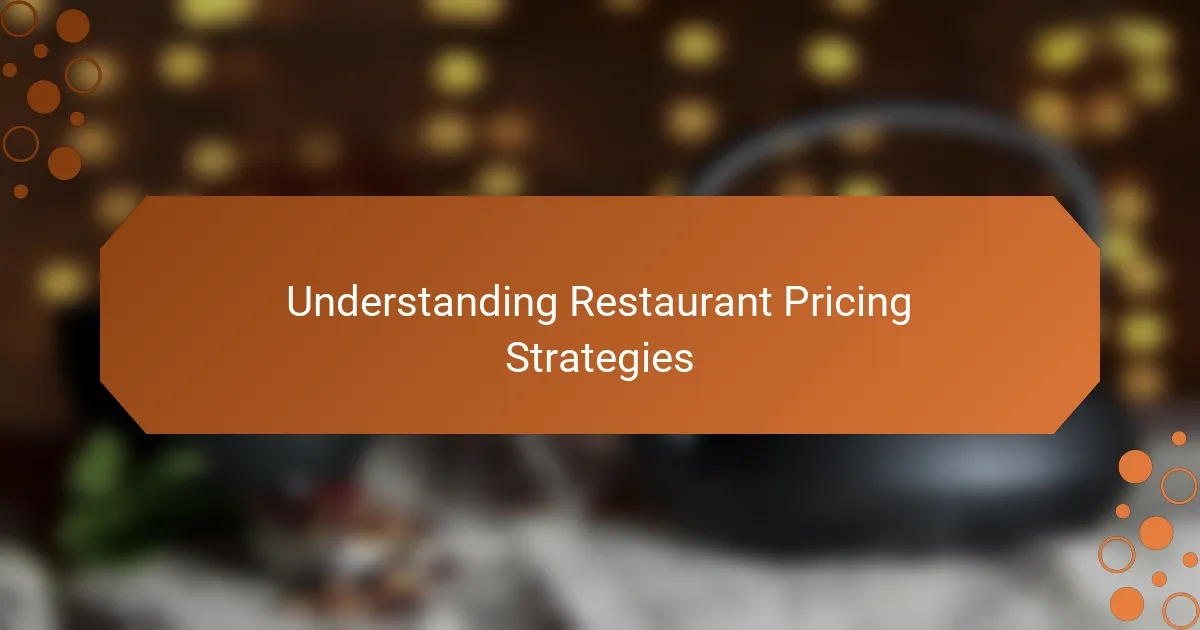
Understanding Restaurant Pricing Strategies
When I think about restaurant pricing strategies, I realize it’s more than just numbers on a menu—it’s a careful balance between cost, value, and customer perception. Have you ever wondered why some dishes seem priced high, yet you’re willing to pay because the experience feels worth it? To me, that’s the art behind setting prices that reflect quality without alienating diners.
From my visits to various places, I’ve noticed restaurants often use “anchor pricing,” where they highlight a premium item to make other options look more appealing. It’s fascinating how this subtle tactic can steer your choices without you even realizing it. I admit, I’ve fallen for it—sometimes willingly paying more because the framing made a dish feel like a better deal.
Then, of course, there’s the influence of location, reputation, and even ingredient sourcing, which all shape what you see on the menu. Thinking about Oyster Oysters’ prices, I can’t help but ask: is it the fresh local seafood or the ambience that justifies the cost? Understanding these layers helps me appreciate the strategy rather than just focusing on the price tag.
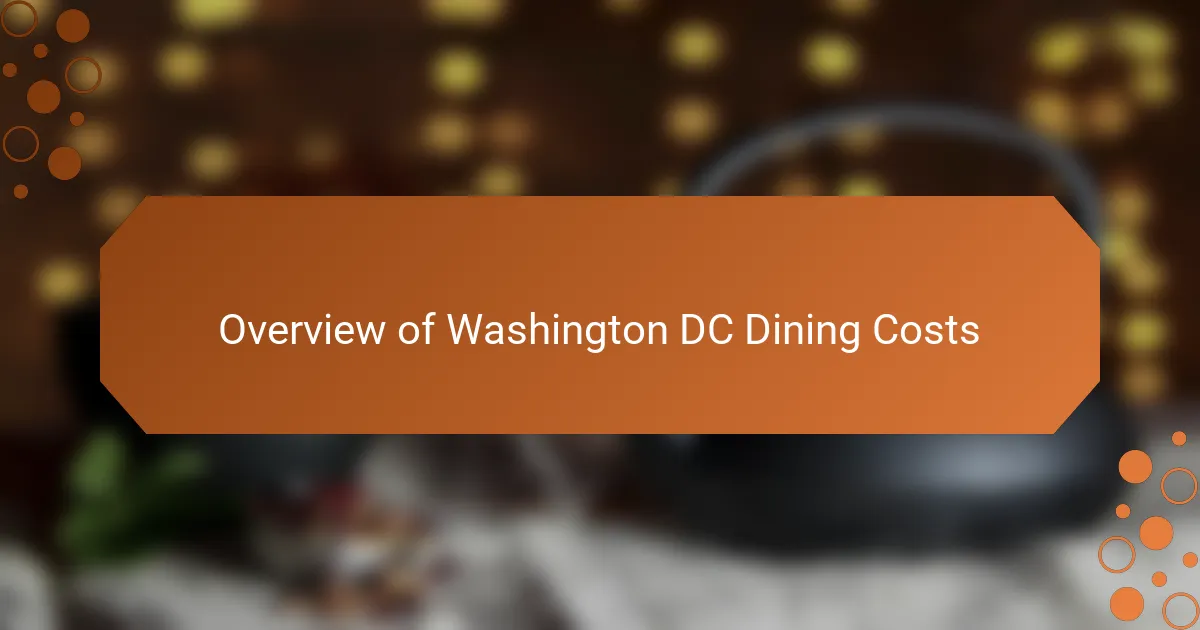
Overview of Washington DC Dining Costs
Dining in Washington DC strikes me as a unique mix of variety and challenge when it comes to cost. Have you noticed how prices can fluctuate dramatically from one neighborhood to another? I’ve often found myself weighing whether a higher price means a memorable meal or just a pricey one.
What I find interesting is how the city’s competitive food scene pushes many spots to balance affordability with quality. On more than one occasion, I’ve stepped into a modest-looking place only to discover exceptional flavors that didn’t break the bank. It makes me wonder—are we paying for the experience, the ingredients, or simply the location?
Of course, the price tags here aren’t solely about food; ambiance and service often sneak into the equation. When I consider dining at places like Oyster Oysters, I ask myself: is the premium worth the entire experience, or could a less expensive option satisfy me just as much? It’s these questions that keep me curious about what Washington DC’s dining prices truly mean.
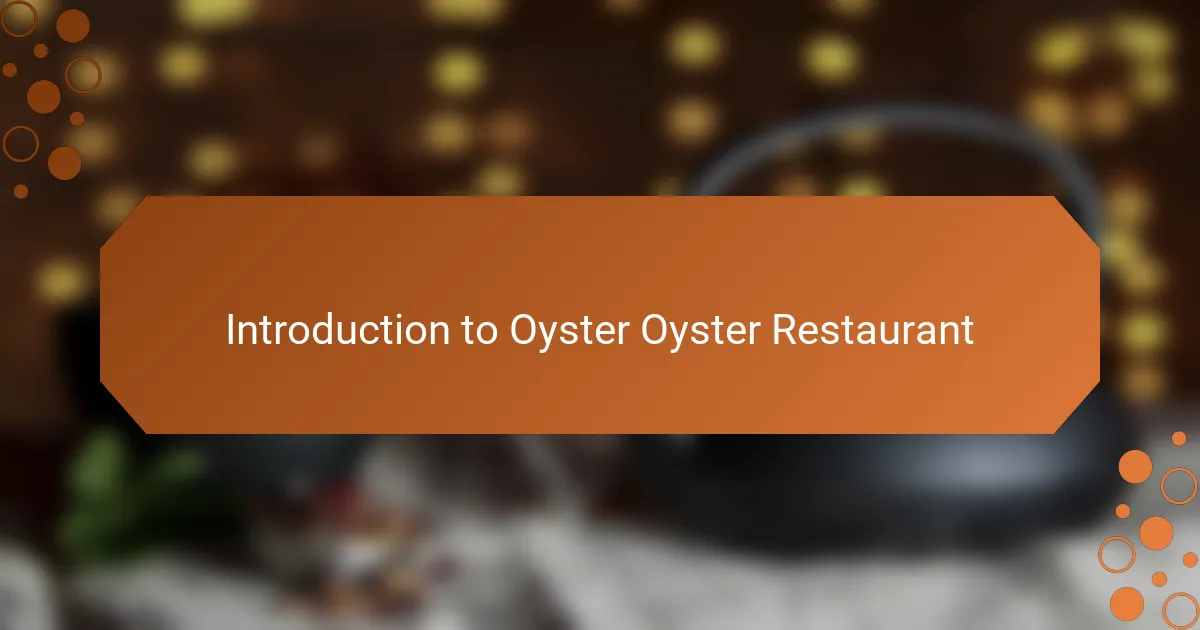
Introduction to Oyster Oyster Restaurant
Stepping into Oyster Oyster feels like entering a celebration of oysters and vegetables, where the menu sings a unique song of sustainability and creativity. I remember my first visit vividly—the excitement of seeing a plant-forward seafood spot in the heart of DC was refreshing and promising. Have you ever experienced a place that feels both innovative and comforting at the same time? That’s exactly the vibe Oyster Oyster exudes.
What strikes me most about this restaurant is its commitment to quality and seasonality, which you can almost taste in every dish. The atmosphere is bright yet cozy, making it clear that this is a spot where thoughtful dining meets a warm welcome. It’s not just a restaurant; it’s a purposeful dining experience that makes you consider the story behind each ingredient.
I find that Oyster Oyster stands out not only for its inventive menu but also for how it challenges typical seafood dining expectations in DC. Whenever I mention it to friends, their curiosity peaks—especially because it’s rare to find a place so dedicated to oysters and plant-based pairings. This blend of focus and creativity definitely sets the stage for worthier prices, but more on that soon.
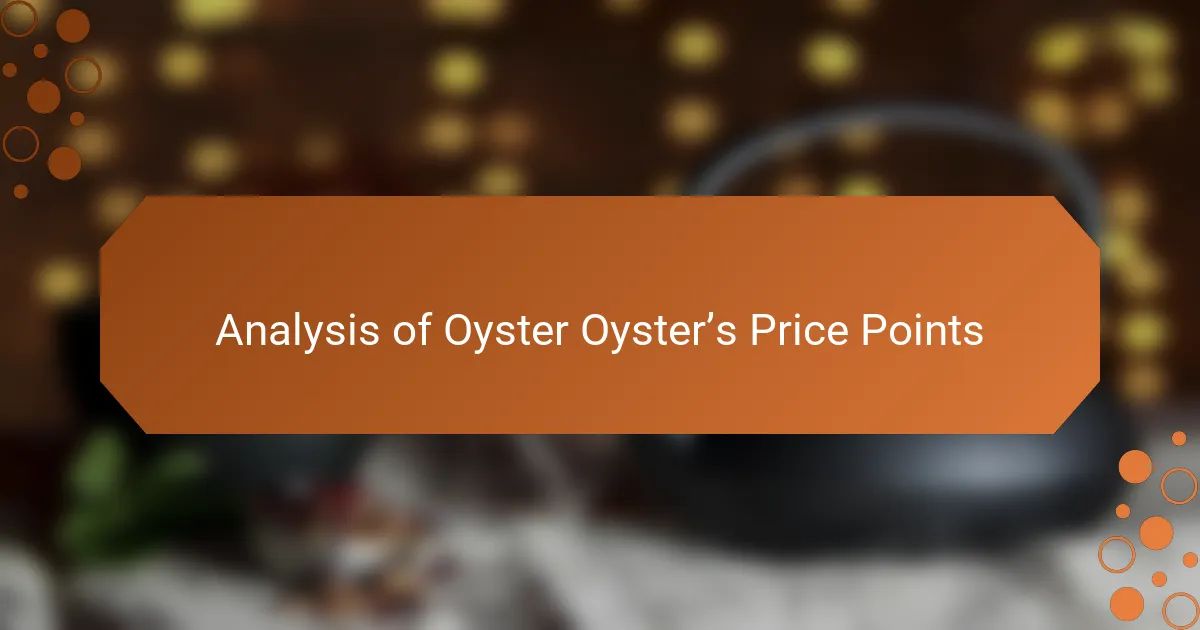
Analysis of Oyster Oyster’s Price Points
When I first glanced at Oyster Oyster’s menu, the prices gave me pause—they’re undeniably on the higher side compared to some other spots in DC. But then I asked myself, am I just paying for the food, or is the sustainability promise and locally sourced ingredients adding an unseen value? From my experience, that kind of thoughtful sourcing often justifies a steeper price, especially when it’s reflected in taste and ambiance.
I’ve noticed their pricing seems to mirror the restaurant’s commitment to plant-forward dishes paired expertly with oysters, a combination that isn’t easy to pull off or find elsewhere. Does that make the elevated cost feel fair? For me, it does, because I’m not just paying for a meal but for an experience that feels curated and purposeful. It’s like investing in a story you can savor with every bite.
Still, I wonder if all diners perceive it the same way. Is the pricing accessible enough to invite repeat visits or is it positioned strictly for special occasions? Personally, I see it as a balance—while the price points aren’t casual, they strike me as aligned with what Oyster Oyster offers beyond just the plate. That balance is what keeps me coming back, even when the bill is a bit higher than average.
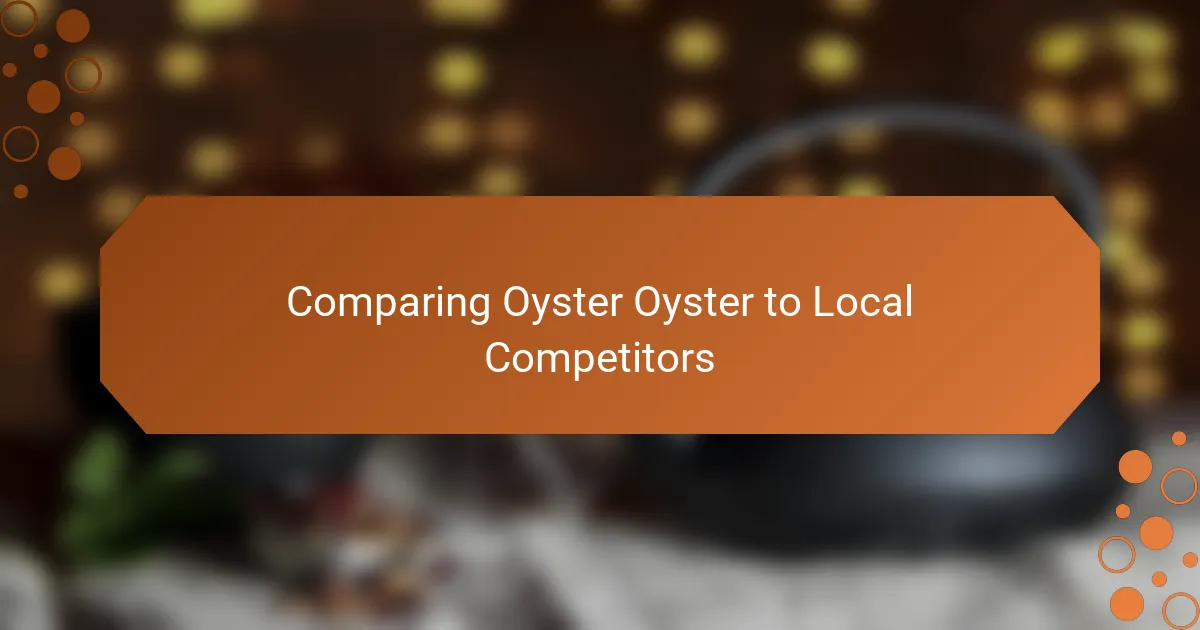
Comparing Oyster Oyster to Local Competitors
When I put Oyster Oyster side by side with local competitors, one thing stands out: their pricing definitely leans toward the premium end. I’ve been to other DC spots serving oysters and seafood, and while some are more budget-friendly, they often don’t deliver the same blend of sustainability and plant-forward innovation that Oyster Oyster does. It makes me think—would I rather pay a bit more for that unique experience or settle for a standard plate elsewhere?
Some of the other restaurants nearby offer oysters at lower prices, but in my experience, the atmosphere and ingredient sourcing don’t always match up. I recall a casual place where the oysters were cheaper, but the overall dining felt rushed and less thoughtful. That contrast made Oyster Oyster’s higher prices feel more justified to me, especially when quality and care are so evident.
Of course, this begs the question: are local diners willing to pay a premium for what Oyster Oyster offers? From what I’ve seen and heard, there’s definitely a crowd that values the restaurant’s story and creativity, which in my opinion, makes the pricing competitive within its niche. Sometimes, paying more feels less like a splurge and more like investing in an experience that’s hard to find anywhere else.
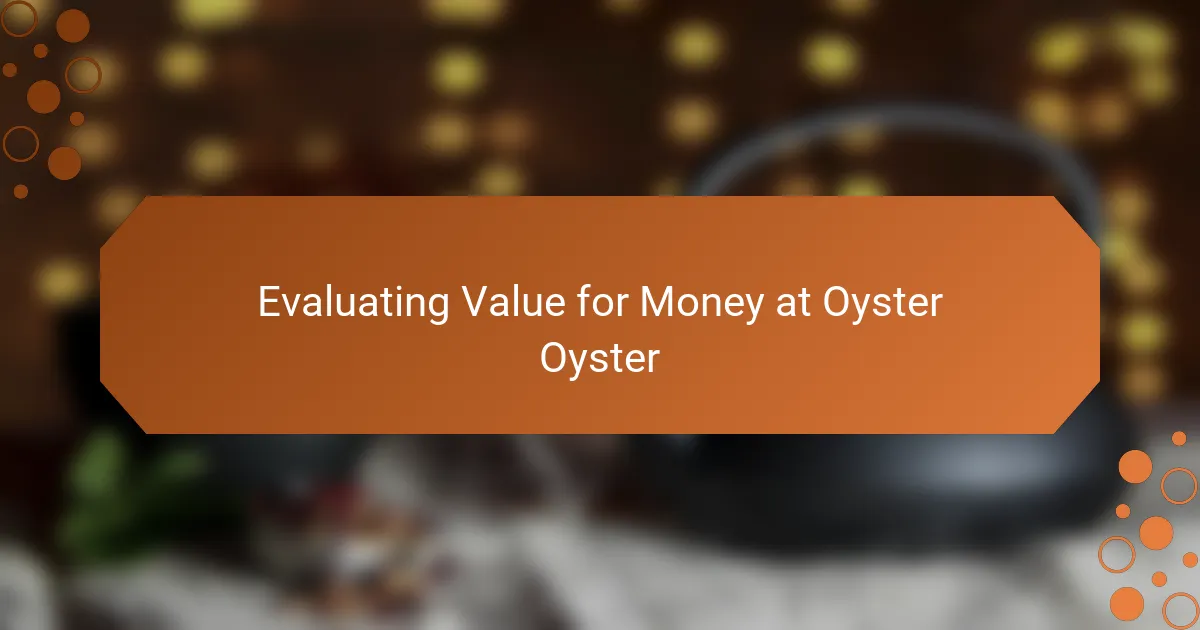
Evaluating Value for Money at Oyster Oyster
When I reflect on whether Oyster Oyster offers good value for money, I find myself weighing more than just portion size or menu variety. Have you ever paid a premium and felt it was truly earned? For me, the freshness of their oysters paired with innovative vegetable dishes makes each dollar feel like a thoughtful investment in quality and creativity.
I remember one evening there when the flavors and presentation made me pause and savor the experience—something I don’t often get with every meal out. It’s those moments that convince me the price isn’t just about food; it’s about being part of something unique and intentional. Yet, I do wonder if that kind of value resonates with everyone or feels exclusive.
Is the slightly elevated cost limiting for casual diners? Possibly. But for those who appreciate the blend of sustainability, seasonality, and artistry, Oyster Oyster’s pricing feels justified and fair. Personally, that blend turns a meal into a memorable occasion worth returning to.
